The Nerites, also known as racing snails (family Neritidae), are distributed worldwide in warm and temperate zones. They have an operculum at the foot that allows them to close the shell completely, a cup-shaped shell, and they are often strikingly brightly colored. Many tropical species colonize uppermost shore areas and can live in both seawater and freshwater. Reproduction occurs via egg capsules, which usually hatch into free-swimming larvae (called veligers). These larvae live for some time in the plankton of the sea until they transform into the typical snail. Veligers cannot develop in freshwater, which is why, with the exception of the genus Theodoxus native to Europe, Nerites do not reproduce in freshwater. Theodoxus is a special case; in their egg capsules there are 50-200 eggs, but only one of them develops into the finished snail, while the rest serves as food for the single child.
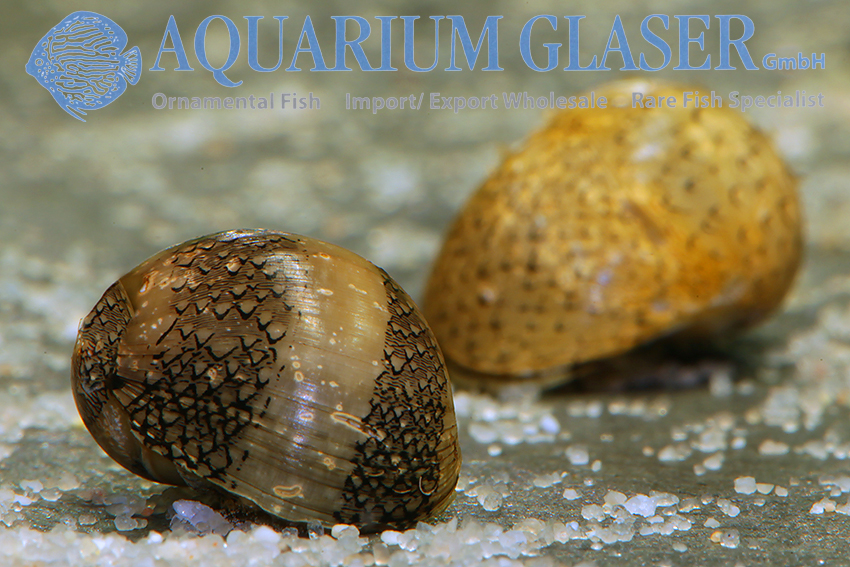
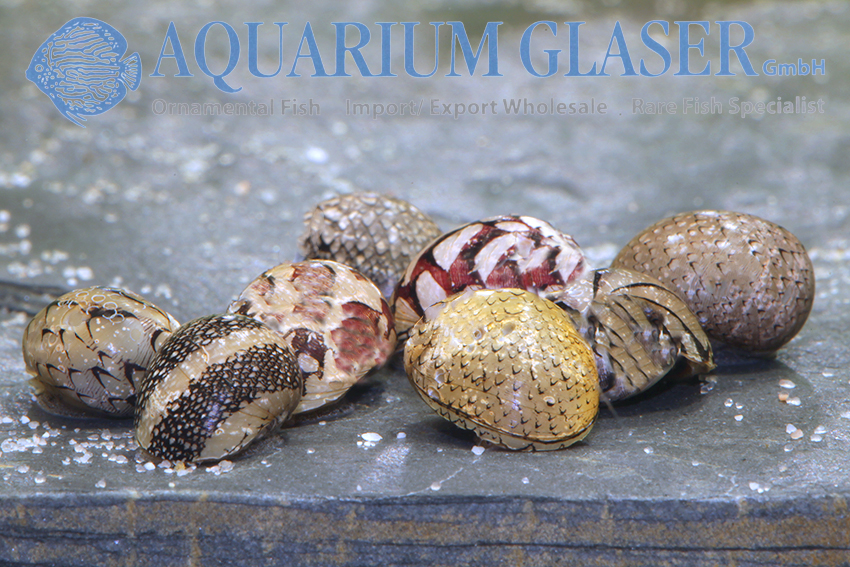
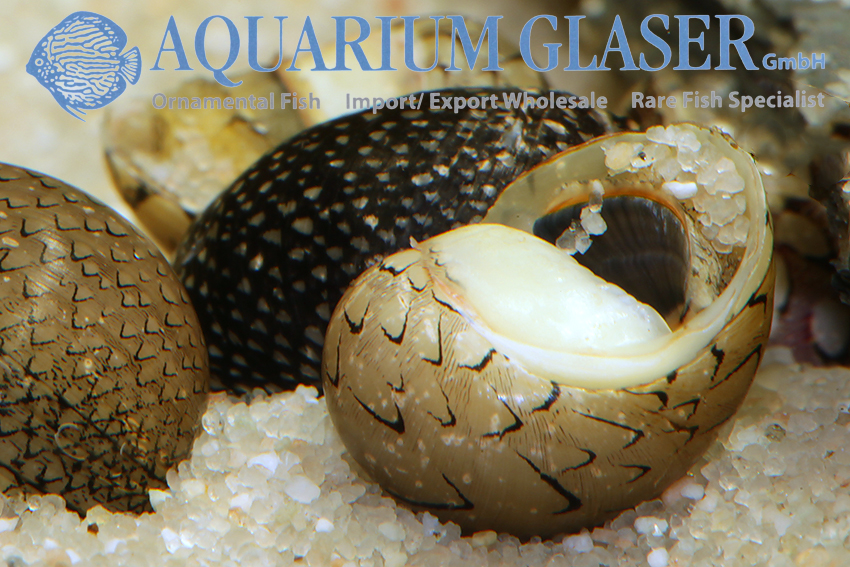
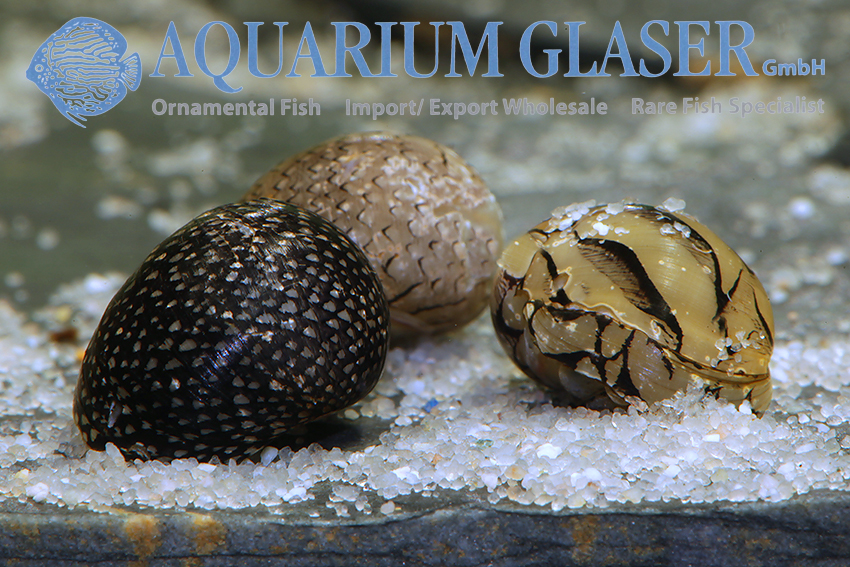
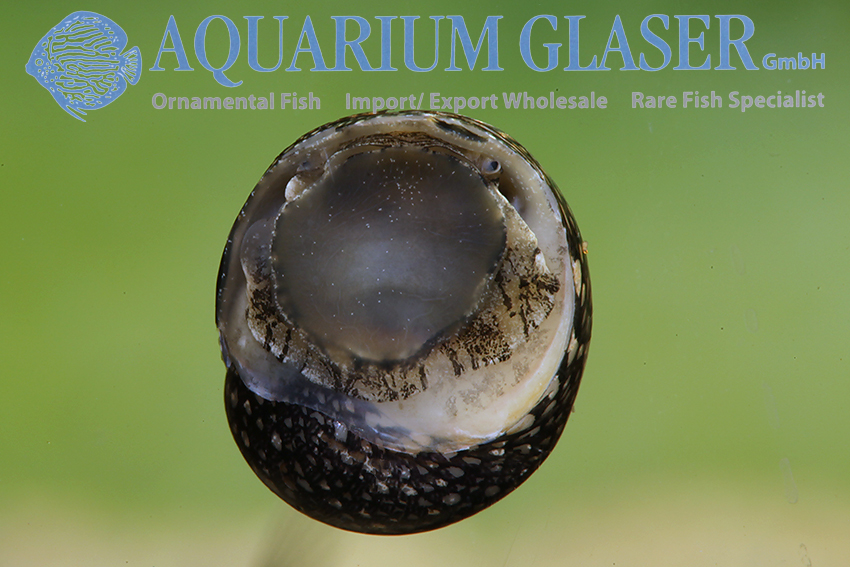
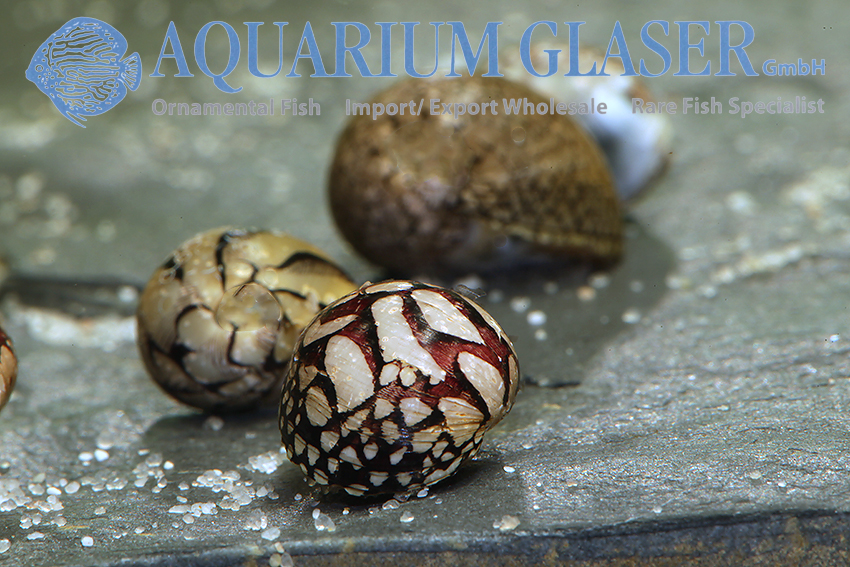
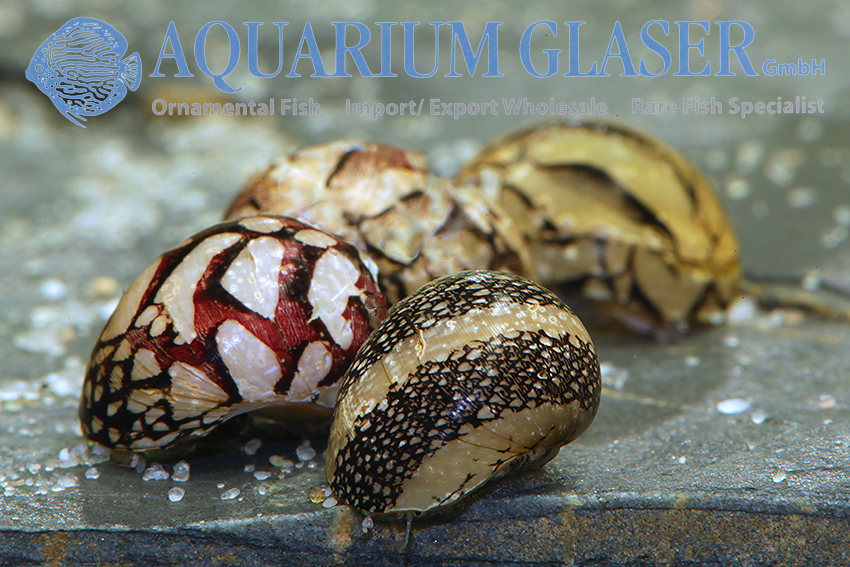
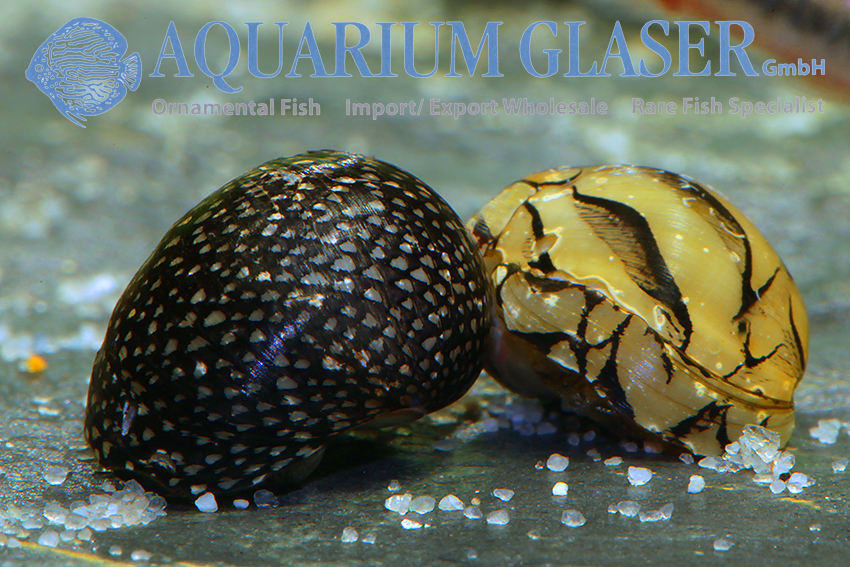
Vitta virginea is a small (shell width not more than 1.5 cm), very variably colored Nerite. There are hardly two specimens that look exactly the same. The species has a very wide distribution from Florida to Brazil (where our specimens come from) and also on several Caribbean islands. The wide distribution is easily explained by the marine larval stage; adults usually live in fresh or brackish water.
As with many other Nerites, there are two reasons that make them perfect aquarium snails: they are excellent algae eaters and very colorful. They do not eat filamentous and brush algae, but they do eat all algae films on glass, decorative objects and plants. The plants themselves are not attacked.
For our customers: the animals have code 493954 on our stock list. Please note that we supply exclusively to wholesalers.
Text & photos: Frank Schäfer




